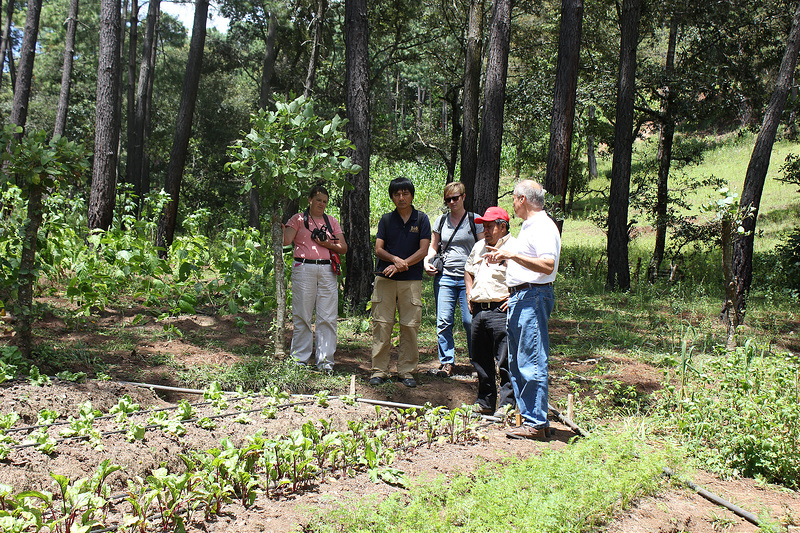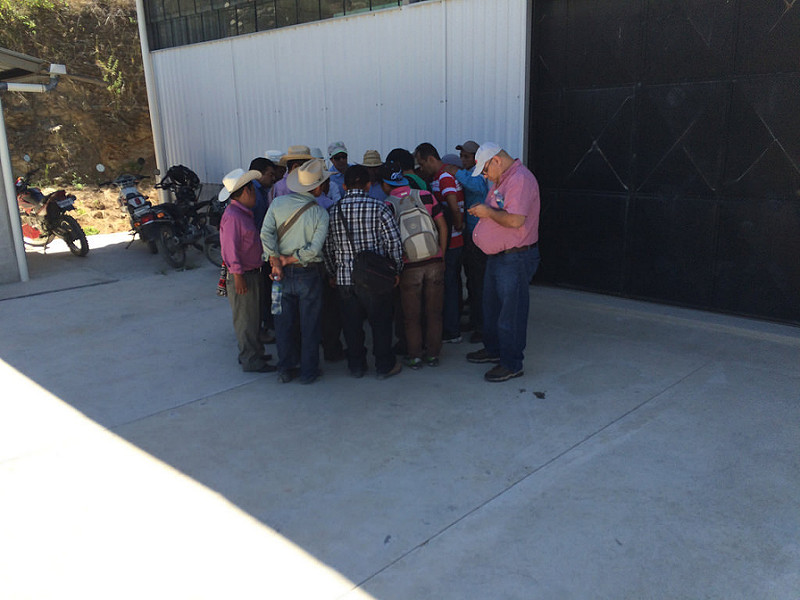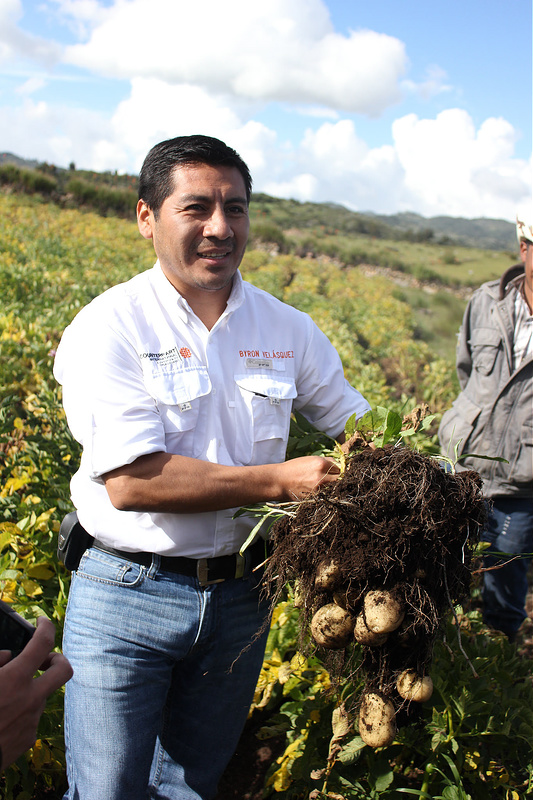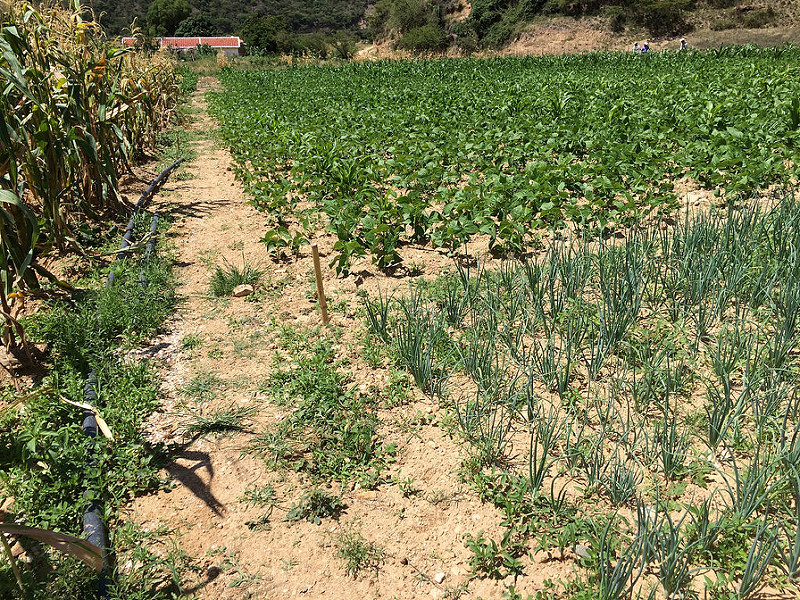
By Amanda Crump, Horticulture Innovation Lab
In late August, I was part of the Horticulture Innovation Lab team who traveled to the Western Highlands of Guatemala to finalize plans for an upcoming project called MásRiego (“more irrigation” in Spanish). We will officially announce and describe this project at a later time, but I would like to tell you about our trip and the things we learned.
The Feed the Future zone of influence in Guatemala lies in the Western Highlands where water is scarce and farming is done on steep slopes. Several USAID partners work in this region in a concerted effort to reduce poverty and rates of stunting. We traveled to this region to learn about the USAID partners’ strategies and look for synergies for MásRiego. Our team consisted of Manny Reyes and Ruth McDaniel of North Carolina A&T State University, and Britta Hansen accompanied me (Amanda Crump) from the Horticulture Innovation Lab at UC Davis. We spent a lot of time with the projects of Save the Children, Catholic Relief Services, Counterpart International, and the Guatemalan Exporters’ Association (AGEXPORT).
Save the Children’s PAISANO project works with families to improve homestead food production and nutrition. Part of their strategy is to develop demonstration farms where farmers can learn about best farming practices and where Save the Children can produce improved livestock breeds. In this photo, we are learning about their horticulture demonstration plots.

Our work in Guatemala is motivated, in part, by the work of Manny Reyes in a previous Horticulture Innovation Lab project associated with our Latin American horticulture assessment. Manny has worked with conservation agriculture in many countries. Everywhere we stopped, Manny pulled out a photo book to show people how conservation agriculture works. Above, farmers working with Counterpart International and the Guatemala Ministry of Agriculture’s extension educators are seeing Manny’s conservation agriculture photos for the first time. Manny doesn’t speak Spanish, but as they say, “a picture is worth a thousand words.”

In fact, in this photo above, whether you believe it or not, Manny Reyes is in the middle of the farmer group showing his photos again.

We also visited the work of Counterpart International. Their strategy in Guatemala is to build support networks for farmer groups. They build support networks of financiers, educators, and input suppliers. The potatoes shown above were grown with the support of Guatemala’s Ministry of Agriculture and Counterpart International.

Finally, we visited farmers working with AGEXPORT and the Feed the Future Rural Value Chains Project. Here, farmers are producing commercial French beans and onions for export while also growing locally important foods like corn. Near these fields, we encountered improved dry bean varieties being produced by the Legume Innovation Lab’s MásFrijol project.
Having visited the projects and the other USAID partners, our team is poised to begin increasing irrigated horticulture production in Guatemala while employing climate-resilient strategies like rainwater harvesting and conservation agriculture.
Related links:
-
- More photos from this work in Guatemala, on Flickr
- More blog posts about conservation agriculture with Manny Reyes
- Advancing Horticulture report for USAID on constraints and opportunities for horticulture in Central America
All photos in this post: Horticulture Innovation Lab photos by Amanda Crump.
